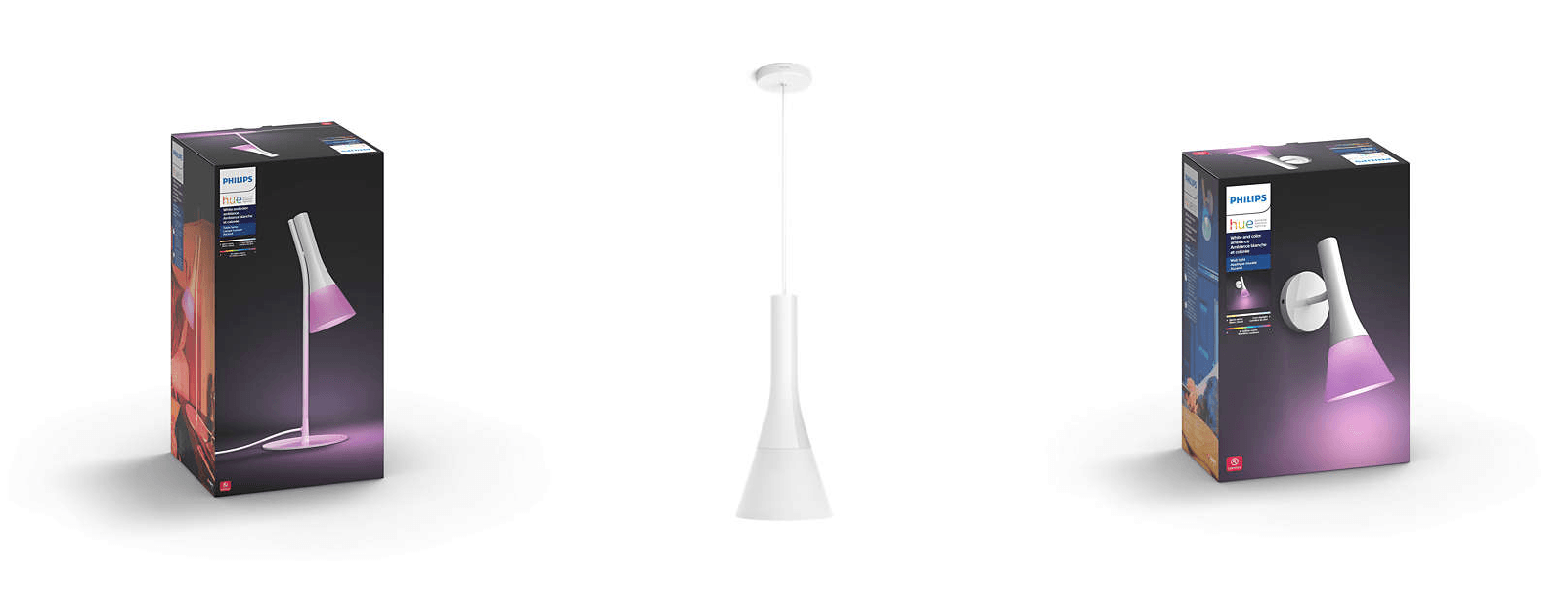Signify (formerly Philips Lighting) has been steadily expanding its Hue lineup of smart lighting products for some time now. Best known for its LED light bulbs, which support HomeKit and other home automation systems, the company also offers a wide range of lamps and light fixtures designed to accommodate a wide range of environments. As previewed for The Verge, the most recent expansion of its product line expands its smart lighting options both inside and outside the home.
Outdoors, Signify announced weatherproof light strips that come in 7-foot and 16-foot models for $89.99 and $159.99. Inside, Signify has added the Ascend collection, which incorporates Hue bulbs and a uniformly-shaped light cover that is offered as a tabletop lamp ($129.99), pendant fixture ($179.99), sconce ($99.99), and floor lamp ($179.99). In addition, Signify introduced the Being pendent ($249.99), a ring-shaped ceiling fixture, the simple Enchant pendent light ($99.99), and a circular, lighted mirror ($249.99) and ceiling light ($179.99) designed for bathrooms.
Most of the new lighting options will be available in October, but the Enchant pendant light and bathroom lights will go on sale August 20th.










